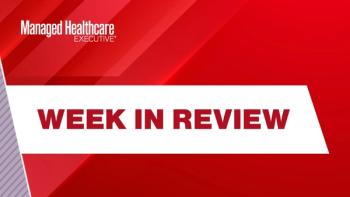
Now health reform heavy lifting begins
Everyone has their take on the Supreme Court ruling, but it's time for the industry to roll up its sleeves and get back to work.
The main result of the Supreme Court decision upholding the Patient Protection and Affordable Care Act is that it ends all the rampant speculation and uncertainty about the future shape of the U.S. healthcare system. Now stakeholders and government agencies can move forward with the complex process of establishing new programs and policies to expand coverage to millions of Americans.
The much-anticipated ruling produced an audible sigh of relief, even among those who would have preferred to see much of the program disappear. With the mandate intact, the expectation is that some 33 million more people will gain coverage over the next decade through insurance exchanges and expanded state Medicaid programs.
States that decide not to expand Medicaid eligibility now will lose only the additional payments for broader coverage, and not all federal Medicaid funding. However, it is not clear how states will respond to this more flexible option. Health plans in the Medicaid managed care space will need to monitor state decisions related to expansion.
Even if states opt for expansion, though, legal experts believe that the Medicaid decision has the potential of imposing more long-term limits on the growth of federal social welfare programs, and may end up having a significant impact on government initiatives and future court decisions.
In addition, states face the enormous task of establishing insurance exchanges, overhauling health IT systems and implementing a host of new provisions. A majority of states had put a hold on these activities pending the Supreme Court decision and now have to decide whether and how to move forward.
The American Medical Assn. and medical professionals applauded the prospect of broader coverage and increased demand for medical care. But insurers raised concerns that such policies will increase costs and premiums.
“Major provisions, such as the premium tax, will have the unintended consequences of raising costs and disrupting coverage unless they are addressed,” said Karen Ignagni, president of America’s Health Insurance Plans, in a prepared statement.
The decision continues several programs that promise long-term savings, such as the development of biosimilars, less costly versions of high-priced biologics that are accounting for a larger share of health plan costs. It also continues support for comparative effectiveness research under the auspices of the Patient-Centered Outcomes Research Institute, which is authorized by the law.
Overall, the decision to uphold the constitutionality of the law is a major political victory for the Obama administration. In ruling that the individual mandate is a legal tax and that individuals can decide to pay the tax instead of purchasing health insurance, Chief Justice John Roberts took a step that will intrigue legal scholars and Supreme Court experts for years. In rejecting the Commerce Clause as the basis for expanding health coverage, though, the Roberts ruling may place significant limits on future federal government expansion. Roberts’ decision to side with the liberal wing of the court, and oppose his conservative allies, most likely will color relations on the court for the rest of his term.
Newsletter
Get the latest industry news, event updates, and more from Managed healthcare Executive.

















































